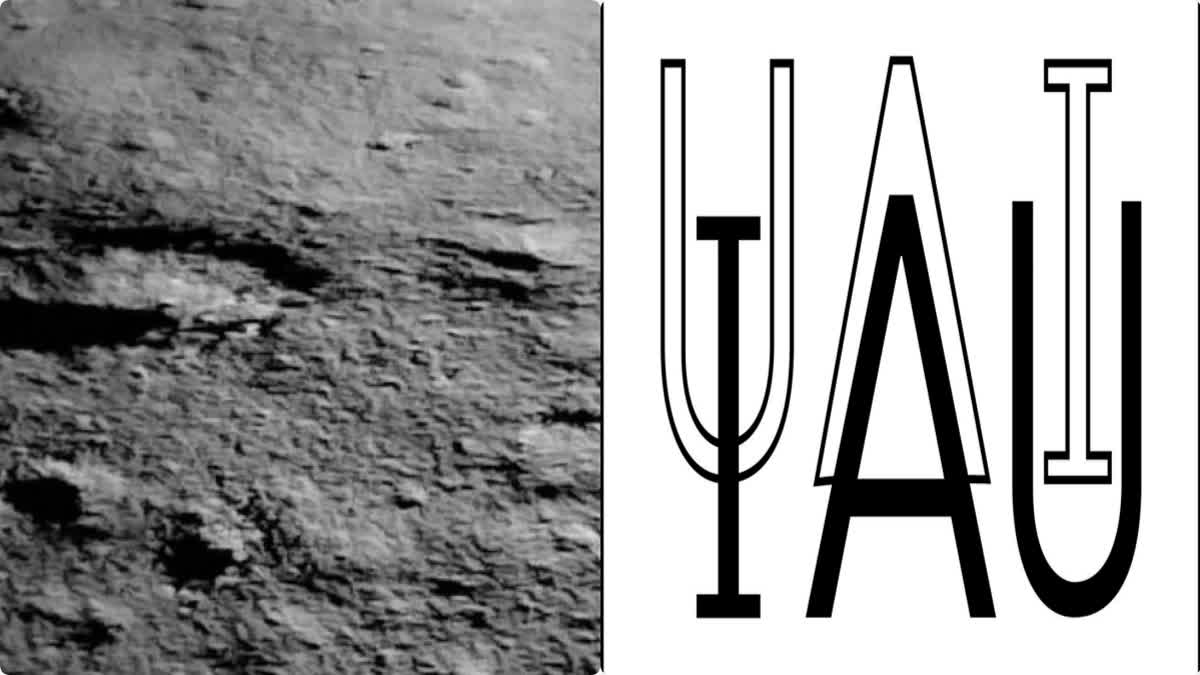Hyderabad: In a historic achievement, India's space agency Indian Space Research Organisation(ISRO) successfully executed its third lunar mission, Chandrayaan-3, landing on the Moon's surface. This accomplishment not only positioned India as the fourth nation to achieve this milestone, but also established it as the first to reach the previously unexplored south pole of Earth's only natural satellite.
The Prime Minister, Narendra Modi, on Saturday made the announcement that the spot of Chandrayaan-3's Vikram lander's touchdown would now be referred to as 'Shiv Shakti Point'. Simultaneously, the site where the Chandrayaan-2 lander had crash-landed in 2019 was designated as 'Tiranga Point'. PM Modi emphasised that this naming tradition held scientific significance and connected the nation from the Himalayas to Kanyakumari.
"There is a resolution for the welfare of humanity in the name 'Shiv' and 'Shakti' gives us strength to fulfil those resolutions. This Shiv Shakti point of the moon also gives a sense of connection with the Himalayas to Kanyakumari", the Prime Minister said while addressing at ISRO at the space agency's Telemetry Tracking and Command Network (ISTRAC).
Who determines the names of lunar points?
The International Astronomical Union (IAU) is responsible for assigning names to various points on the lunar surface. Founded in 1919, the IAU serves as the authority on planetary and satellite nomenclature. It consists of 92 member countries, including India. Comprising divisions, commissions and working groups with notable astronomers worldwide, the IAU oversees this naming process.
The IAU's approach to naming planetary features
The IAU primarily relies on its working groups to handle the naming of celestial objects. This process begins when the professional science community identifies a specific scientific need to name a planetary surface feature. Initial names for significant features are proposed by the appropriate IAU Task Group in collaboration with the mission team. As more detailed images and maps become available, investigators may request names for additional features, all in accordance with IAU guidelines.
Criteria for naming lunar objects
The IAU outlines criteria for naming lunar features. Names must be clear, unambiguous and original. They should avoid political, military, or religious connotations. While commemorating individuals isn't the primary goal, exceptions are made under certain circumstances. These individuals must have been deceased for a minimum of three years before name submission. The IAU restricts the use of names with political, military, or religious significance, barring names of political figures prior to the 19th century.
India's previous lunar efforts
After India's first Chandrayaan mission in 2008, the spot where the 'Probe' crashed was named 'Jawahar Sthal' in honour of Jawaharlal Nehru.
- Moon south pole soil temperature: First Chandrayaan-3 observations from ChaSTE payload onboard Vikram Lander
- Looking excitedly for next 14 days, ISRO capable of inter-planetary missions: Somanath
- We have achieved what no one else could, says Prime Minister Narendra Modi on Chandrayaan-3 success.
- Chandrayaan-3: Prime Minister Narendra Modi reaches ISRO; welcomed by S Somanath
- Chandrayaan-2 Orbiter circling Moon captures Vikram Lander's image; ISRO shares two pics



